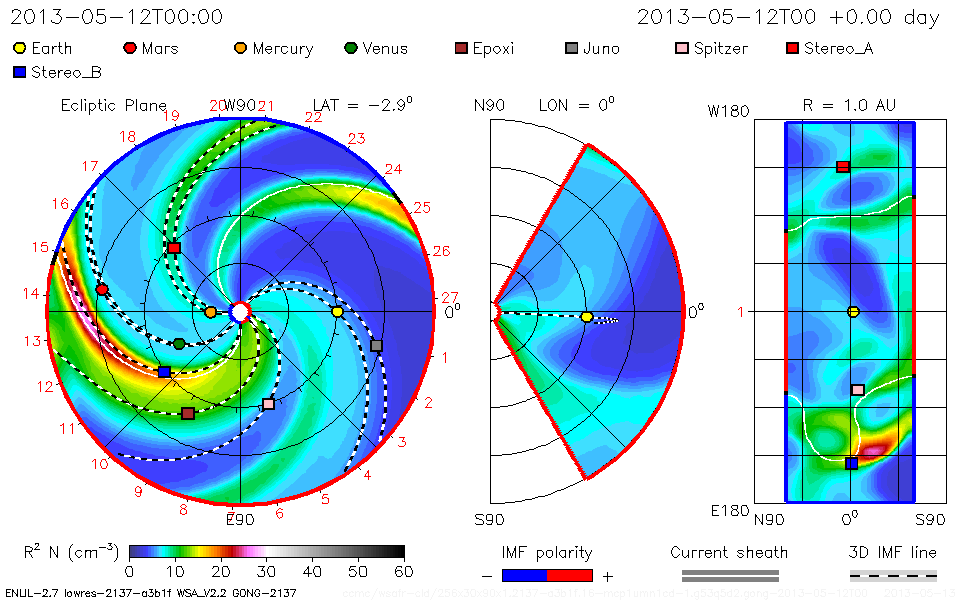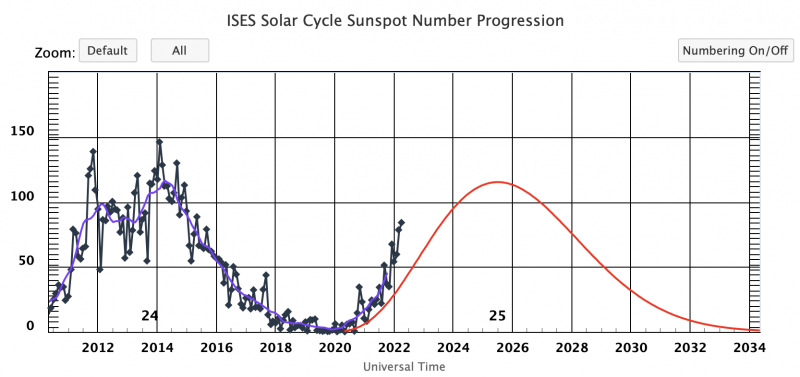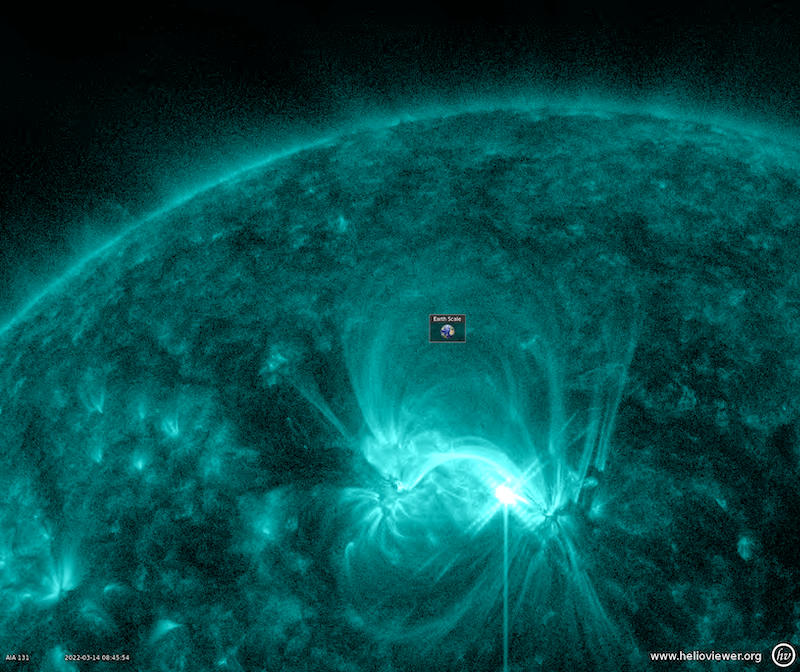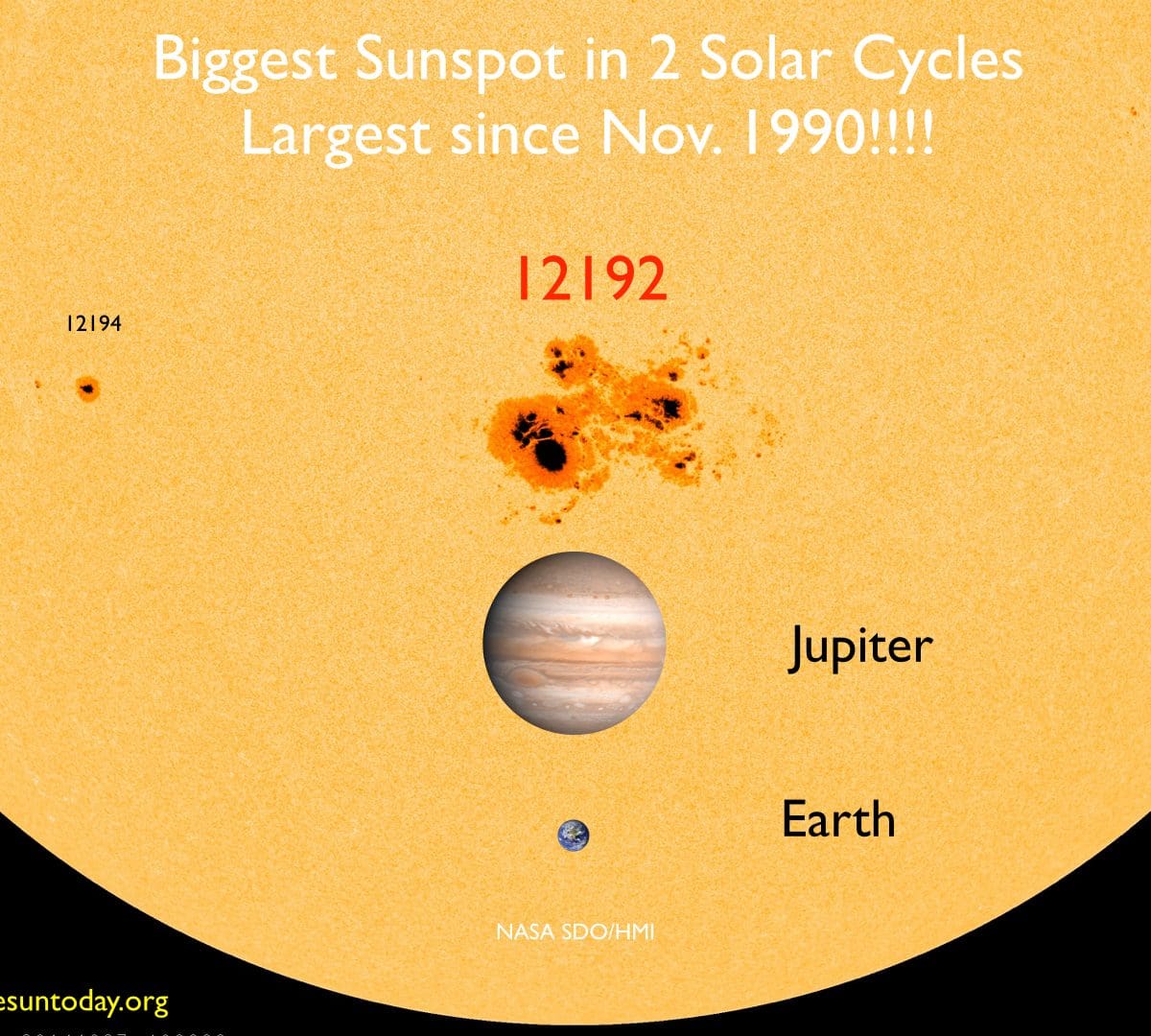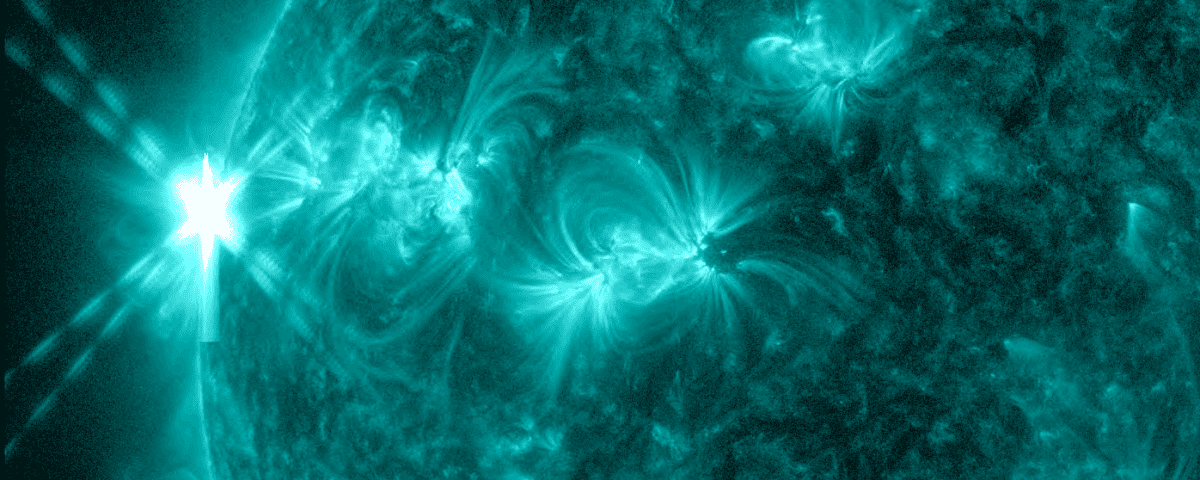
Larger than the First! – (Update)
In less than 24 hours, the active region about to rotate into view has produced another X-class solar flare.
19:15 UT – The NASA GSFC Space Weather Research Center has estimated that the CME may give a glancing blow to STEREO B (~05/15/2013 18:00 UT) and Epoxi (~05/16/2013 00:00 UT) and hit Spitzer (~05/15/2013 06:00 UT).
17:54 UT – The SOHO LASCO C2 instrument observed a CME associated with the eruption that produced the X2.8 flare. These observations along with STEREO Behind indicate that the CME will probably not impact Earth.
17: 14 UT – A radio blackout (R3) on NOAA’s scale of R1-R3, was issued shortly after the flare. The current blackout level is now down to R1 as the X-ray level is still above M1. Here is a look at the current radio absorption predictions due to the X-rays hitting the atmosphere.
R3 alerts are issued at the X1 flare level and indicate a High Frequency radio (HF) and radio navigation blackout over the flare lit side of Earth for about 1 hour. At the R1 level the blackout is much weaker and intermittent.
16:05 UT – The flare peaked at X2.8.
This makes the flare the 3rd largest solar flare of the current solar cycle (cycle 24) behind March 7, 2012 (X5.4) and August 9, 2011 (X6.9).
16:03 UT – X flare in progress – currently at X2.4 (R3 radio blackout)
credit: NASA/SDO, NASA SWRC, helioviewer.org, NOAA/SWPC


